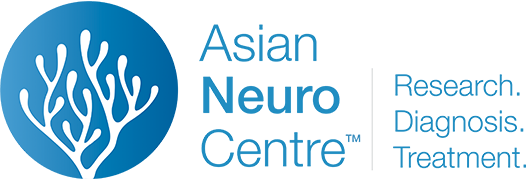Tremor is an unintentional, rhythmic muscle movement involving to-and-fro movements (oscillations) of one or more parts of the body. It is the most common of all involuntary movements and can affect the hands, arms, head, face, voice, trunk, and legs. Most tremors occur in the hands. In some people, tremor is a symptom of a neurological disorder or appears as a side effect of certain drugs. The most common form of tremor, however, occurs in otherwise largely healthy people. Although tremor is not life-threatening, it can be embarrassing to some people and make it harder to perform daily tasks.
How is tremor diagnosed?
During a physical exam a doctor can determine whether the tremor occurs primarily during action or at rest. The doctor will also check for tremor symmetry, any sensory loss, weakness or muscle atrophy, or decreased reflexes. A detailed family history may indicate if the tremor is inherited. Blood or urine tests can detect thyroid malfunction, other metabolic causes, and abnormal levels of certain chemicals that can cause tremor. These tests may also help to identify contributing causes, such as drug interaction, chronic alcoholism, or another condition or disease. Diagnostic imaging using computerized tomography or magnetic resonance imaging may help determine if the tremor is the result of a structural defect or degeneration of the brain.
The doctor will perform a neurological exam to assess nerve function and motor and sensory skills. The tests are designed to determine any functional limitations, such as difficulty with handwriting or the ability to hold a utensil or cup. The individual may be asked to place a finger on the tip of her or his nose, draw a spiral, or perform other tasks or exercises.
The doctor may order an electromyogram to diagnose muscle or nerve problems. This test measures involuntary muscle activity and muscle response to nerve stimulation.
Treatments
Some tremors respond to treatment of the underlying condition. For example, in some cases of psychogenic tremor, treating the patient’s underlying psychological problem may cause the tremor to disappear.
Symptomatic drug therapy is available for several forms of tremor. Drug treatment for parkinsonian tremor involves levodopa and/or dopamine-like drugs such as pramipexole and ropinirole. Other drugs used to lessen parkinsonian tremor include amantadine hydrochloride and anticholinergic drugs.
Essential tremor may be treated with propranolol or other beta blockers (such as nadolol) and primidone, an anticonvulsant drug.
Cerebellar tremor typically does not respond well to medical treatment.
Dystonic tremor may respond to clonazepam, anticholinergic drugs, and intramuscular injections of botulinum toxin. Botulinum toxin is also prescribed to treat voice and head tremors and several movement disorders.
Clonazepam and primidone may be prescribed for primary orthostatic tremor.
Enhanced physiologic tremor is usually reversible once the cause is corrected. If symptomatic treatment is needed, beta blockers can be used.
Eliminating tremor “triggers” such as caffeine and other stimulants from the diet is often recommended.
Physical therapy may help to reduce tremor and improve coordination and muscle control for some individuals. A physical therapist will evaluate the individual for tremor positioning, muscle control, muscle strength, and functional skills. Teaching the person to brace the affected limb during the tremor or to hold an affected arm close to the body is sometimes useful in gaining motion control. Coordination and balancing exercises may help some people. Some therapists recommend the use of weights, splints, other adaptive equipment, and special plates and utensils for eating.
Surgical intervention such as thalamotomy and deep brain stimulation may ease certain tremors. These surgeries are usually performed only when the tremor is severe and cannot be controlled satisfactorily with drugs.
Deep brain stimulation (DBS), the most common form of surgical treatment of tremor, uses implantable electrodes to send high-frequency electrical signals to the thalamus. A battery-operated device called a neurostimulator is used to deliver electrical stimulation to targeted areas in the brain that control movement. The person uses a hand-held magnet to turn on and turn off a pulse generator that is surgically implanted under the skin. The electrical stimulation temporarily disables the tremor and can be “reversed,” if necessary, by turning off the implanted electrode. Batteries in the generator last about 5 years and can be replaced surgically. DBS is currently used to treat parkinsonian tremor, essential tremor, and dystonia.
Thalamotomy, involving the creation of lesions in the brain region called the thalamus, is quite effective in treating individuals with essential, cerebellar, or parkinsonian tremor. This in-hospital procedure is performed under local anesthesia, with the individual being awake. After the person’s head is secured in a metal frame, the surgeon maps the brain to locate the thalamus. A small hole is drilled through the skull and a temperature-controlled electrode is inserted into the thalamus. A low-frequency current is passed through the electrode to activate the tremor and to confirm proper placement. Once the site has been confirmed, the electrode is heated to create a temporary lesion. Testing is done to examine speech, language, coordination, and tremor activation, if any. If no problems occur, the probe is again heated to create a 3-mm permanent lesion. The probe, when cooled to body temperature, is withdrawn and the skull hole is covered. The lesion causes the tremor to permanently disappear without disrupting sensory or motor control.
The most common side effects of tremor surgery include dysarthria (problems with motor control of speech), temporary or permanent cognitive impairment (including visual and learning difficulties), and problems with balance.
